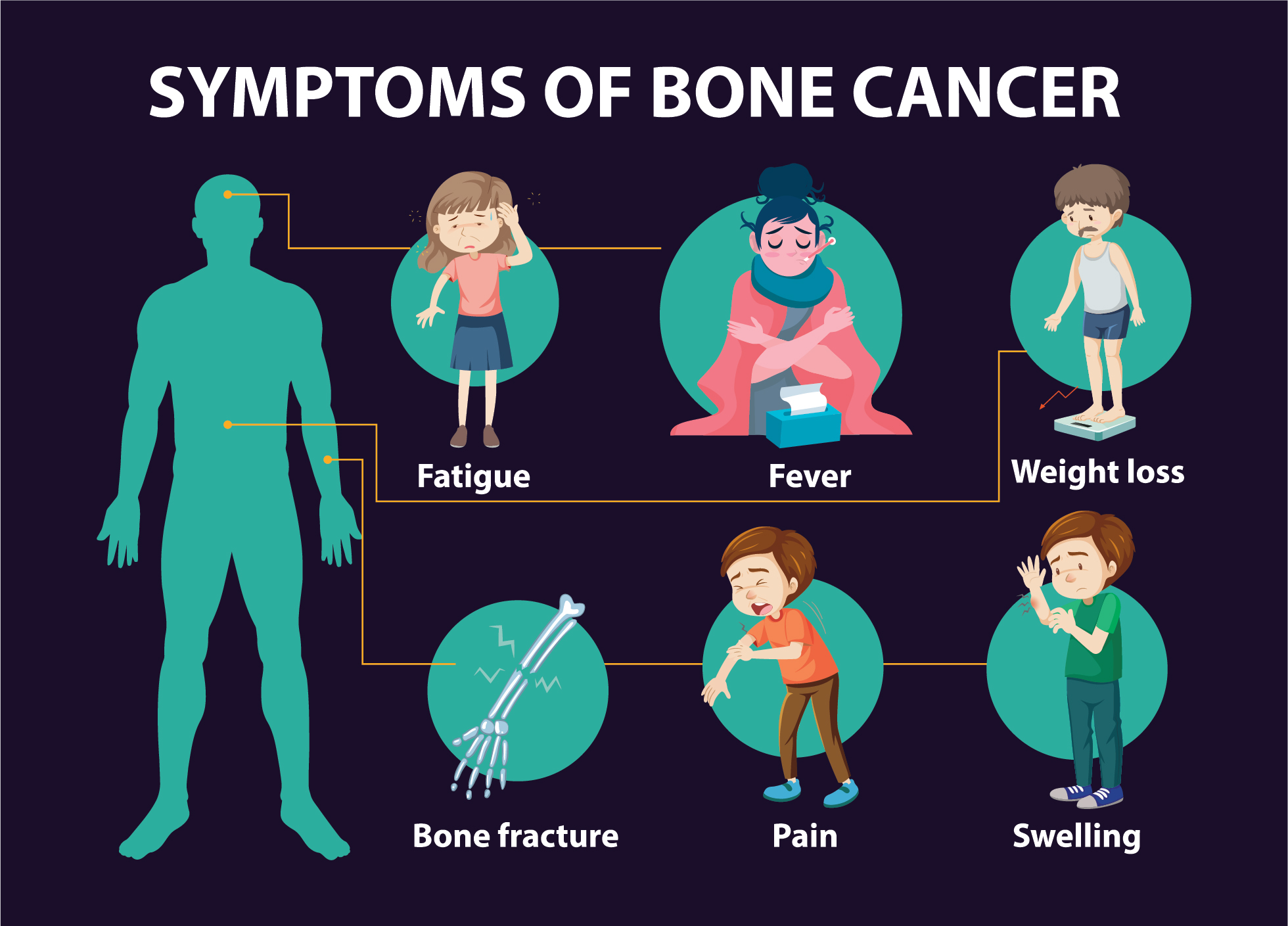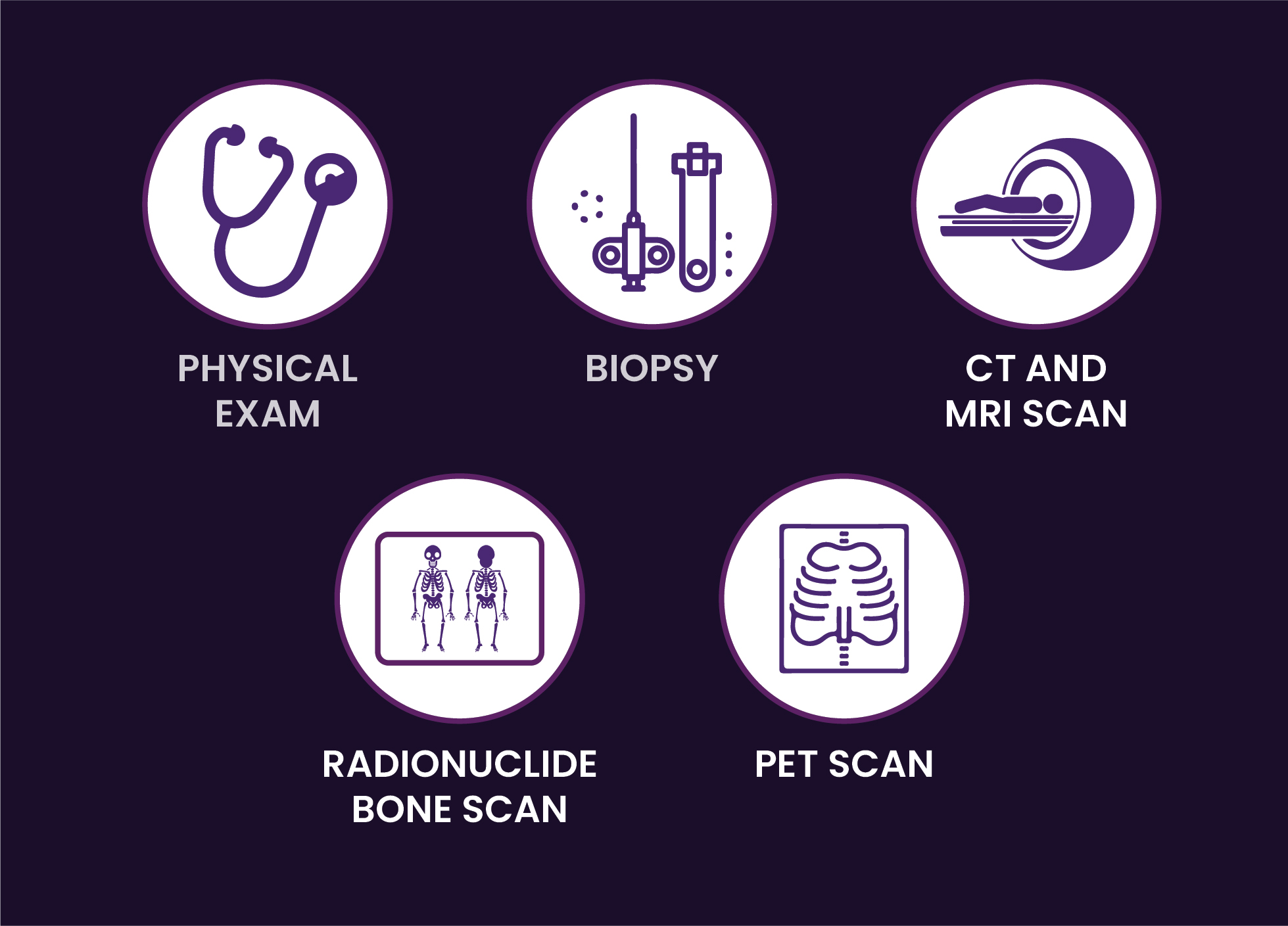Bone Cancer
Bone Cancer
Bone tumors are comparatively uncommon, constituting only 0.5% of the total world cancer incidence. Bone cancer, a disease characterized by the uncontrolled growth of cells of the bone. It occurs when a tumor, or abnormal mass of tissue, forms in a bone. Bone cancer is rarer than most types of cancer, the risk is highest for those between 10 and 30 years of age, particularly during a teenage growth spurt. This could mean a link between rapid bone growth and the risk of developing tumors. The risk does decrease with middle age but again rises in older adults.

Types of Bone Cancer
Causes
The cause of bone cancer isn't exactly known, but certain factors may contribute to or increase a person’s chances of forming abnormal growths in the bone. These include:
Risk factor
While doctors are yet to research the exact reason for bone cancer, certain risk factors have been associated with bone cancers.


Signs & Symptoms
The signs of bone cancer depend on where and how large the cancer is. Common signs include:
Diagnosis
Bone cancer is usually diagnosed based on the patient's symptoms, physical examination, imaging and other tests.

Management
The treatment options of bone cancer are based on the type of cancer, the stage of cancer, patient’s general health. Different bone cancers respond to different treatments, for example, some bone cancers are treated through surgery; some with a combination of surgery and chemotherapy; while some with surgery, chemotherapy, and radiation therapy.

Follow-Up
Follow up after treatment, you will need check-ups every 3–12 months for several years to confirm that cancer hasn't come back and to help you manage any treatment side effects.
